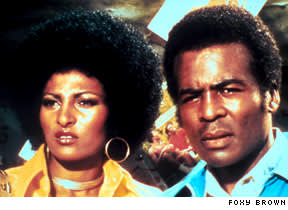To call this five DVD-set The Best of Soul Cinema is a stretch for MGM, not just because there are better examples of the early to mid-'70s blaxploitation cinema, but because two of the films included don't even fit the mould. Three films here (Coffy, Foxy Brown and Hell Up In Harlem) follow this B-movie formula: vengeful stories of oppressed urban blacks rising up against the establishment, more often than not including some ambitious black politician or drug dealer. The films are cheaply made, poorly put together and feature porno bass-popping soundtracks. But at their best, blaxploitation movies can be enjoyed on a number of levels: as kitsch, as social history, as underground cinema or as a training ground for many current character actors. But what you won't get from these DVD issues is a proper exploration of the genre, its origins and its evolution. In fact, two of these films don't belong and are poorly handled as well. 1975's Cooley High is a good film, and while it may feature an African-American cast, it's not blaxploitation; it's a period piece set in mid-'60s Chicago that's more American Graffiti than Shaft. It's a funny, albeit terribly dated film presented here in pan and scan (not widescreen) with zero extras. I'm Gonna Git You Sucka is a 1988 parody film and the directorial debut of Keenen Ivory Wayans (Scary Movie). He knows his stuff, to be sure, and it's a distractingly entertaining flick, but it doesn't belong here and again, no extras. Real fans might anticipate high-end special edition reissues of Coffy and Foxy Brown; until then, we'll have to make due with just writer and director Jack Hill's informative commentary to fill in the extras gap. He's a funny, interesting speaker and he doesn't hold back on the troubles, financial and artistic, that plagued these two Pam Grier starring vehicles. His commentaries (on finding a stunt double for the statuesque Grier or on rewriting his Coffy sequel as Foxy Brown by changing nothing but the name) are the missing history DVD buffs seek. Jack Hill's troubles pale in comparison to those of Hell Up In Harlem writer/director Larry Cohen. It's a terrible, haphazard, sloppy film, incoherent and plotless (something Cohen himself is surprised so few people noticed). But two minutes of his commentary explains why: the film was shot on location, in New York, entirely without star Fred Williamson, who never left California. Cohen used a body double (who Williamson complained had too big an ass to match) and added California-shot dialogue and inserts of Williamson later. It's these tidbits that make sets like The Best of Soul Cinema so frustrating sure, the films are an important part of cinema history, but without the context that DVD can so effectively portray, the films themselves are only half the story. (MGM)
The Best of Soul Cinema

BY James KeastPublished Feb 1, 2004



